-

新人教版高中英语必修3Unit 1 Festivals and Celebrations-Listening &Speaking&Talking教学设计
The theme of this section is “Talk about festival activities and festival experiences”.Festival and holiday is a relaxing and interesting topic for students. This part talks about the topic from the daily life of students’. In the part A ---Listening and Speaking, there are three conversations among different speakers from three countries(Japan, Rio and China), where the speakers are participating in or going to participate in the festivals and celebrations. So listening for the relationship among them is a fundamental task. Actually, with the globalization and more international communication, it is normal for Chinese or foreigners to witness different festivals and celebrations in or out of China. In the Conversation 1, a foreign reporter is interviewing a Japanese young girl who just had participated in the ceremony of the Coming-of-Age Day on the street and asking her feeling about the ceremony and the afterwards activities. Conversation 2, Chinese girl Li Mei is witnessing the Rio Carnival for the first time, and her friend Carla gives her some advice on the costumes which enables her to match with the carnival to have a good time. Conversation 3, a Chinese guide is showing a group of foreign visitors around the Lantern Festival and introducing the customs of the festival to them. The three conversations have a strong vitality and insert the festival and cultural elements from different countries. So perceiving the festivals and cultures from different countries is the second task. At the same time, the scripts also insert the targeted grammar --- v-ing as attributive and predicative, which students can perceive and experience in a real context and make a road for the further study. That is the third task. In the Part B--- Listening and Talking, the theme is “Talk about festival experience”, which is the common topic in our daily conversations. During the conversation, Song Lin, a Chinese student, asked Canadian friend Max about how to spend Christmas. In the conversation, Song Lin talked about experience and the feelings during the Chinese Spring Festival, during which there are not only some enjoyable things but some unpleasant things. After the listening, perhaps students find there are some similarities between Christmas and the Chinese Spring Festival as there are some differences in the origins and celebrations. For example, people always visit friends and relatives, decorate their houses, have a big dinner together, chat and give presents to each other.

新人教版高中英语必修3Unit 1 Festivals and Celebrations-Reading for writing教学设计二
Step 3 Analyzing article structureActivity 31. Teachers raise questions to guide students to analyze the chapter structure of this diary and think about how to describe the festival experience. (1)What should be included in the opening/body/closing paragraph(s)?(2)How did the writer arrange his/her ideas?(3)What kind of interesting details did the writer describe?(4)How did the writer describe his/her feelings/emotions during the event?2. Students read and compare the three sentence patterns in activity 2. Try to rewrite the first paragraph of the diary with these three sentence patterns. After that, students exchange corrections with their partners. Such as:●This was my first time spending three days experiencing the Naadam Festival in China’s Inner Mongolia Autonomous Region and it was an enjoyable and exciting experience. ●I'll never forget my experience at the Naadam Festival because it was my first time to watch the exciting Mongolian games of horse racing, wrestling, and archery so closely. ●I'll always remember my first experience at the Naadam Festival in China’s Inner Mongolia Autonomous Region because it was so amazing to spend three days witnessing a grand Mongolian ceremony. Step 4 Accumulation of statementsActivity 41. Ask the students to read the diary again. Look for sentences that express feelings and emotions, especially those with the -ing form and the past participle. Such as:● …horse racing, wrestling, and archery, which are all so exciting to watch. ● some amazing performances● I was surprised to see…● I was a little worried about. . . ● feeling really tiredOther emotional statements:●I absolutely enjoyed the archery, too, but the horse races were my favourite part. ●I'm finally back home now, feeling really tired, but celebrating Naadam with my friend was totally worth it. ●He invited me back for the winter to stay in a traditional Mongolian tent and cat hot pot. I can’t wait!2. In addition to the use of the -ing form and the past participle, the teacher should guide the students in the appreciation of these statements, ask them to memorize them, and encourage them to use them reasonably in writing practice.

新人教版高中英语必修3Unit 1 Festivals and Celebrations-Reading for Writing教学设计一
The topic of this part is “Write about your festival experience”.During the Listening and Speaking and Talking, students are just asked to say out their festival experiences such as the Spring Festival, Mid-autumn Day, but this part students will be asked to write down their own festival experiences. During the reading part, it introduces the Naadam Festival in Inner Mongolia Autonomous Region, which can give students a good example to imitate. Students not only learn the festival, but touch and feel the Inner Mongolian’s character, the spirit and cultural atmosphere, which can help students form the cultural awareness and learn to enjoy and value the diversity of Chinese culture.Concretely, the dairy tells the experience that the author spent the Naadam Festival in Inner Mongolia Autonomous Region with his/her friend. The structure is clear. In the opening paragraph, it introduces the topic of the Naadam Festival and the whole feeling. Then it introduces the items of the festival like the ceremony, wrestling and horse racing. Finally, it summarizes this experience. Because this part is a travel journal, we must guide students pay more attention to these details: 1. use the first person. 2. use the past tense to tell the past thing and use the present or future tense to describe the scenery. 3. use the timeline to tell the development. 4. be careful for the author’s psychology, emotion and feeling, etc.1. Read quickly to get main idea; read carefully to get the detailed information about Naadam Festival.2. Learn the structure of the reading article and language.3. Write an article about a festival experience4. Learn to use the psychology, emotions and feeling in the writing.1. Write an article about a festival experience.2. Use the structure of the reading article and language.

新人教版高中英语选修2Unit 1 Science and Scientists-Discovering useful structures教学设计
The grammatical structure of this unit is predicative clause. Like object clause and subject clause, predicative clause is one of Nominal Clauses. The leading words of predicative clauses are that, what, how, what, where, as if, because, etc.The design of teaching activities aims to guide students to perceive the structural features of predicative clauses and think about their ideographic functions. Beyond that, students should be guided to use this grammar in the context apporpriately and flexibly.1. Enable the Ss to master the usage of the predicative clauses in this unit.2. Enable the Ss to use the predicative patterns flexibly.3. Train the Ss to apply some skills by doing the relevant exercises.1.Guide students to perceive the structural features of predicative clauses and think about their ideographic functions.2.Strengthen students' ability of using predicative clauses in context, but also cultivate their ability of text analysis and logical reasoning competence.Step1: Underline all the examples in the reading passage, where noun clauses are used as the predicative. Then state their meaning and functions.1) One theory was that bad air caused the disease.2) Another theory was that cholera was caused by an infection from germs in food or water.3) The truth was that the water from the Broad Street had been infected by waste.Sum up the rules of grammar:1. 以上黑体部分在句中作表语。2. 句1、2、3中的that在从句中不作成分,只起连接作用。 Step2: Review the basic components of predicative clauses1.Definition

新人教版高中英语选修2Unit 1 Science and Scientists-Learning about Language教学设计
Step 7: complete the discourse according to the grammar rules.Cholera used to be one of the most 1.__________ (fear) diseases in the world. In the early 19th century, _2_________ an outbreak of cholera hit Europe, millions of people died. But neither its cause, 3__________ its cure was understood. A British doctor, John Snow, wanted to solve the problem and he knew that cholera would not be controlled _4_________ its cause was found. In general, there were two contradictory theories 5 __________ explained how cholera spread. The first suggested that bad air caused the disease. The second was that cholera was caused by an _6_________(infect) from germs in food or water. John Snow thought that the second theory was correct but he needed proof. So when another outbreak of cholera hit London in 1854, he began to investigate. Later, with all the evidence he _7_________ (gather), John Snow was able to announce that the pump water carried cholera germs. Therefore, he had the handle of the pump _8_________ (remove) so that it couldn't be used. Through his intervention,the disease was stopped in its tracks. What is more, John Snow found that some companies sold water from the River Thames that __9__________________ (pollute) by raw waste. The people who drank this water were much more likely _10_________ (get) cholera than those who drank pure or boiled water. Through John Snow's efforts, the _11_________ (threaten) of cholera around the world saw a substantial increase. Keys: 1.feared 2.when 3. nor 4.unless 5.that/which 6.infection 7.had gathered 8.removed 9.was polluted 10.to get 11. threat

新人教版高中英语选修2Unit 1 Science and Scientists-Reading and thinking教学设计
Step 5: After learning the text, discuss with your peers about the following questions:1.John Snow believed Idea 2 was right. How did he finally prove it?2. Do you think John Snow would have solved this problem without the map?3. Cholera is a 19th century disease. What disease do you think is similar to cholera today?SARS and Covid-19 because they are both deadly and fatally infectious, have an unknown cause and need serious public health care to solve them urgently.keys:1. John Snow finally proved his idea because he found an outbreak that was clearly related to cholera, collected information and was able to tie cases outside the area to the polluted water.2. No. The map helped John Snow organize his ideas. He was able to identify those households that had had many deaths and check their water-drinking habits. He identified those houses that had had no deaths and surveyed their drinking habits. The evidence clearly pointed to the polluted water being the cause.3. SARS and Covid-19 because they are both deadly and fatally infectious, have an unknown cause and need serious public health care to solve them urgently.Step 6: Consolidate what you have learned by filling in the blanks:John Snow was a well-known _1___ in London in the _2__ century. He wanted to find the _3_____ of cholera in order to help people ___4_____ it. In 1854 when a cholera __5__ London, he began to gather information. He ___6__ on a map ___7___ all the dead people had lived and he found that many people who had ___8____ (drink) the dirty water from the __9____ died. So he decided that the polluted water ___10____ cholera. He suggested that the ___11__ of all water supplies should be _12______ and new methods of dealing with ____13___ water be found. Finally, “King Cholera” was __14_____.Keys: 1. doctor 2. 19th 3.cause 4.infected with 5.hit 6.marked 7.where 8.drunk 9.pump 10.carried 11.source 12.examined 13.polluted 14.defeatedHomework: Retell the text after class and preview its language points

新人教版高中英语选修2Unit 1 Science and Scientists-Using langauge教学设计
This happens because the dish soap molecules have a strong negative charge, and the milk molecules have a strong positive charge. Like magnets, these molecules are attracted to each other, and so they appear to move around on the plate, taking the food coloring with them, making it look like the colors are quickly moving to escape from the soap.Listening text:? Judy: Oh, I'm so sorry that you were ill and couldn't come with us on our field trip. How are you feeling now? Better?? Bill: Much better, thanks. But how was it?? Judy: Wonderful! I especially liked an area of the museum called Light Games.it was really cool. They had a hall of mirrors where I could see myself reflected thousands of times!? Bill: A hall of mirrors can be a lot of fun. What else did they have?? Judy: Well, they had an experiment where we looked at a blue screen for a while, and then suddenly we could see tiny bright lights moving around on it. You'll never guess what those bright lights were!? Bill: Come on, tell me!? Judy: They were our own blood cells. For some reason, our eyes play tricks on us when we look at a blue screen, and we can see our own blood cells moving around like little lights! But there was another thing I liked better. I stood in front of a white light, and it cast different shadows of me in every color of the rainbow!? Bill: Oh, I wish I had been there. Tell me more!? Judy: Well, they had another area for sound. They had a giant piano keyboard that you could use your feet to play. But then, instead of playing the sounds of a piano, it played the voices of classical singers! Then they had a giant dish, and when you spoke into it, it reflected the sound back and made it louder. You could use it to speak in a whisper to someone 17 meters away.? Bill: It all sounds so cool. I wish I could have gone with you? Judy: I know, but we can go together this weekend. I'd love to go there again!? Bill: That sounds like a great idea!
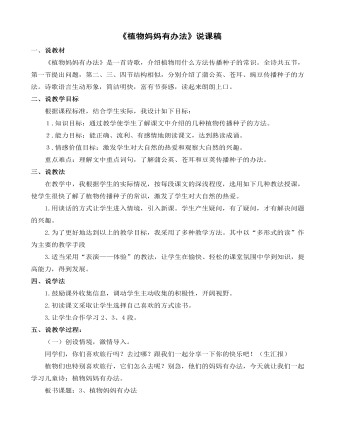
《植物妈妈有办法》说课稿
“纷纷出发”,他们会去哪呢?我来采访一下小蒲公英,你想去哪儿?(公园,田野,树林……)那用我们第一小节的一个词就叫“四海为家”。(四海为家即是走到哪儿,种子就在哪儿生根发芽)
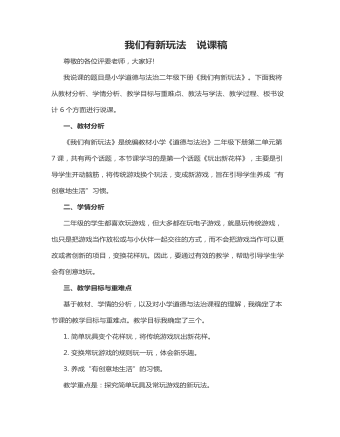
我们有新玩法 说课稿
尊敬的各位评委老师,大家好!我说课的题目是小学道德与法治二年级下册《我们有新玩法》。下面我将从教材分析、学情分析、教学目标与重难点、教法与学法、教学过程、板书设计6个方面进行说课。一、教材分析《我们有新玩法》是统编教材小学《道德与法治》二年级下册第二单元第7课,共有两个话题,本节课学习的是第一个话题《玩出新花样》,主要是引导学生开动脑筋,将传统游戏换个玩法,变成新游戏,旨在引导学生养成“有创意地生活”习惯。二、学情分析二年级的学生都喜欢玩游戏,但大多都在玩电子游戏,就是玩传统游戏,也只是把游戏当作放松或与小伙伴一起交往的方式,而不会把游戏当作可以更改或者创新的项目,变换花样玩。因此,要通过有效的教学,帮助引导学生学会有创意地玩。三、教学目标与重难点基于教材、学情的分析,以及对小学道德与法治课程的理解,我确定了本节课的教学目标与重难点。教学目标我确定了三个。1. 简单玩具变个花样玩,将传统游戏玩出新花样。2. 变换常玩游戏的规则玩一玩,体会新乐趣。3. 养成“有创意地生活”的习惯。
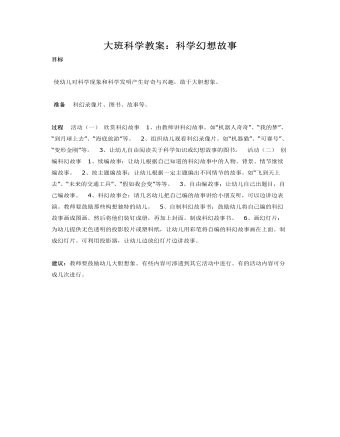
大班科学教案:科学幻想故事
过程 活动(一)欣赏科幻故事 1、由教师讲科幻故事。如“机器人奇奇”、“我的梦”、“到月球上去”、“海底旅游”等。 2、组织幼儿观看科幻录像片。如“机器猫”、“可赛号”、“变形金刚”等。 3、让幼儿自由阅读关于科学知识或幻想故事的图书。 活动(二)创编科幻故事 1、续编故事:让幼儿根据自己知道的科幻故事中的人物、背景、情节继续编故事。
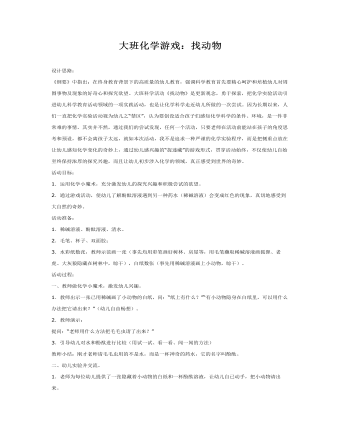
大班科学教案:化学游戏:找动物
活动目标: 1.运用化学小魔术,充分激发幼儿的探究兴趣和积极尝试的欲望。 2.通过游戏活动,使幼儿了解酚酞溶液遇到另一种药水(稀碱溶液)会变成红色的现象,真切地感受到大自然的奇妙。 活动准备: 1.稀碱溶液、酚酞溶液、清水。 2.毛笔、杯子、双面胶; 3.水彩纸数张,教师示范画一张(事先均用彩笔画好树林、房屋等,用毛笔蘸取稀碱溶液画狐狸、老虎、大灰狼隐藏在树林中,晾干),白纸数张(事先用稀碱溶液画上小动物,晾干)。 活动过程: 一、教师做化学小魔术,激发幼儿兴趣。 1.教师出示一张已用稀碱画了小动物的白纸,问:“纸上有什么?”“有小动物隐身在白纸里,可以用什么办法把它请出来?”(幼儿自由畅想)。 2.教师演示: 提问:“老师用什么方法把毛毛虫请了出来?” 3.引导幼儿对水和酚酞进行比较(用试一试、看一看、闻一闻的方法) 教师小结:刚才老师请毛毛虫用的不是水,而是一杯神奇的药水,它的名字叫酚酞。
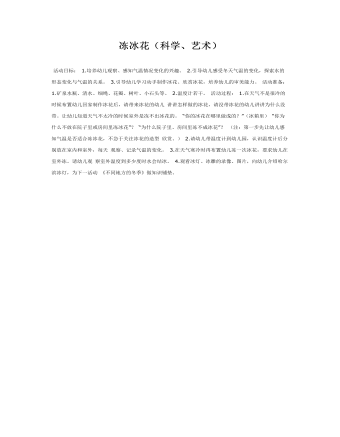
大班科学教案:冻冰花(科学、艺术)
2.引导幼儿感受冬天气温的变化,探索水的形态变化与气温的关系。 3.引导幼儿学习动手制作冰花、欣赏冰花,培养幼儿的审美能力。活动准备: 1.矿泉水瓶、清水、细绳、花瓣、树叶、小石头等。 2.温度计若干。活动过程: 1.在天气不是很冷的时候布置幼儿回家制作冰花后,请带来冰花的幼儿讲讲怎样做的冰花,请没带冰花的幼儿讲讲为什么没带。让幼儿知道天气不太冷的时候室外是冻不出冰花的。 “你的冰花在哪里做成的?”(冰箱里) “你为什么不放在院子里或房间里冻冰花”? “为什么院子里、房间里冻不成冰花”?
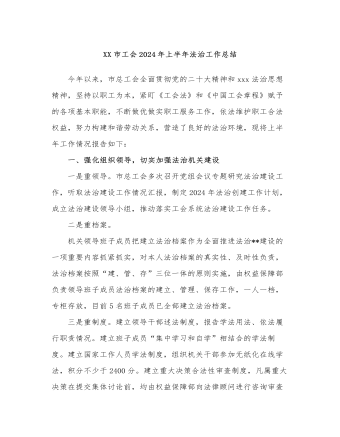
XX市工会2024年上半年法治工作总结
二是依法做好劳动争议调解工作。组建职工法律服务团,吸纳13名专业突出、热心公益的律师参与,明确法律援助工作流程及补贴标准,及时为职工提供专业、全面的法律咨询服务,引导职工依法理性表达诉求,今年接待职工来访100人次。联合市中级人民法院开展“法院+工会”劳动争议诉调对接工作,并在*市建立示范点,办理案件3件。三是全面提升工会法治建设水平。职工服务中心是各级工会组织开展法治宣传、服务职工的主要阵地。大力推动一站式职工服务中心建设,在全市范围内打造以市职工服务中心为龙头、乡镇(科局)职工服务中心为骨干,社区(村)职工服务中心为基础、企业职工服务中心为支撑的四级服务职工网络。服务中心设置了“政策咨询”、“法律援助”、“劳动争议调处”、“信访接待”、“心灵聊吧”和“权益维护”等服务窗口,促进工会法治建设进入了规范化、制度化和机制化轨道。
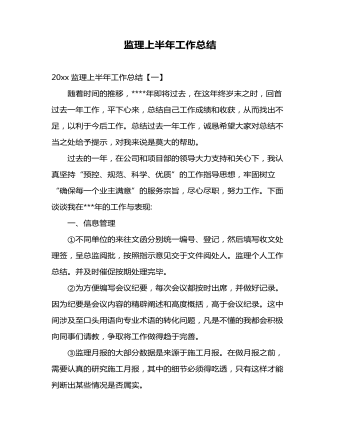
监理上半年工作总结
现场不能解决的问题,立即下发监理工程师通知,并上传至总监办。指令落实后,将指令及经监理检查签认的施工单位回复一并报总监办存档;指令未落实或已落实未回复的,一律不予计量。全年共向施工单位发出监理工程师通知单14份,其中已落实11份,另3份仍在落实中。
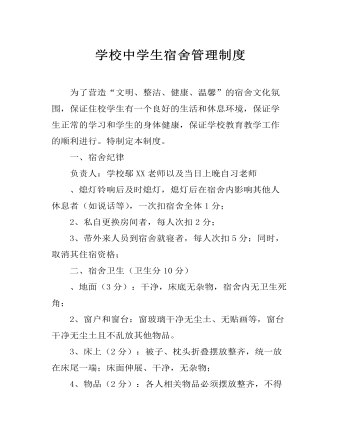
学校中学生宿舍管理制度
一、宿舍纪律 负责人:学校鄢XX老师以及当日上晚自习老师 、熄灯铃响后及时熄灯,熄灯后在宿舍内影响其他人休息者(如说话等),一次扣宿舍全体1分; 2、私自更换房间者,每人次扣2分; 3、带外来人员到宿舍就寝者,每人次扣5分;同时,取消其住宿资格; 二、宿舍卫生(卫生分10分) 、地面(3分):干净,床底无杂物,宿舍内无卫生死角; 2、窗户和窗台:窗玻璃干净无尘土、无贴画等,窗台干净无尘土且不乱放其他物品。 3、床上(2分):被子、枕头折叠摆放整齐,统一放在床尾一端;床面伸展、干净,无杂物; 4、物品(2分):各人相关物品必须摆放整齐,不得乱放; 5、墙壁(1分):墙壁无乱写乱画、无贴画、无铁钉、无乱挂物品。
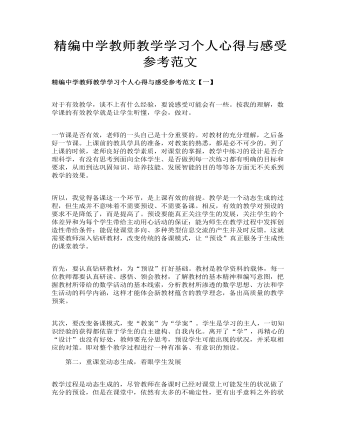
精编中学教师教学学习个人心得与感受参考范文
首先,要认真钻研教材,为“预设”打好基础。教材是教学资料的载体,每一位教师都要认真研读、感悟、领会教材,了解教材的基本精神和编写意图,把握教材所带给的数学活动的基本线索,分析教材所渗透的数学思想、方法和学生活动的科学内涵,这样才能体会新教材蕴含的教学理念,备出高质量的教学预案。 其次,要改变备课模式,变“教案”为“学案”。学生是学习的主人,一切知识经验的获得都依靠于学生的自主建构、自我内化。离开了“学”,再精心的“设计”也没有好处,教师要充分思考,预设学生可能出现的状况,并采取相应的对策。即对整个教学过程进行一种有准备、有意识的预设。
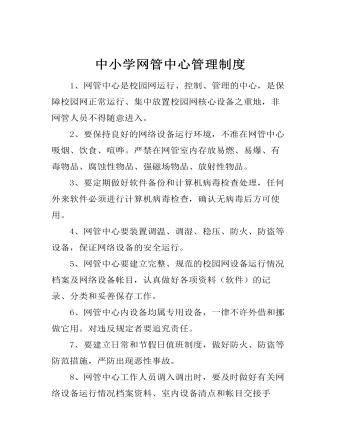
中小学网管中心管理制度
2、要保持良好的网络设备运行环境,不准在网管中心吸烟、饮食、喧哗。严禁在网管室内存放易燃、易爆、有毒物品、腐蚀性物品、强磁场物品、放射性物品。 3、要定期做好软件备份和计算机病毒检查处理,任何外来软件必须进行计算机病毒检查,确认无病毒后方可使用。 4、网管中心要装置调温、调湿、稳压、防火、防盗等设备,保证网络设备的安全运行。 5、网管中心要建立完整、规范的校园网设备运行情况档案及网络设备帐目,认真做好各项资料(软件)的记录、分类和妥善保存工作。

人教版新课标PEP小学英语三年级下册Do you like pears说课稿9篇
第一环节:教师参与到其中的一个小组,用“Do you like…?”的句型提问,因为学生在上学期已经接触了“like”一词,现在又有了前面三次听的机会,对本课所要学的对话有了一定的感知,预计有部分学生会回答“Yes,Ido.或No,I don’t .”当学生回答“Yes,Ido.”时,我就说:“Here you are .”同时也将水果递给学生。在教师与学生、学生与学生的对话中,领悟了“Yes,Ido.”和“Here you are .”的意思。当学生回答“No, I don’t.” 时,教师不把水果递给他。通过这个过程的口语与演示,学生也会领悟到“No, I don’t.”的意思。同时,进行师问生答的口语操练。师生对话要适当增加,使学生对“Yes,Ido.和No, I don’t”的句型有更多的操练机会。这样,第一环节的目标也就达到了。第二环节:由师问生答的形式,变为生问师答。通过教师引导,让学生用“Do you like …”提问。因为,学生要把“Do you like …”的音读准,有一定难度。因此,在起先学生说这句式时,要发挥教师的主导作用,让学生跟读,注重学生发音的准确。

人教版新课标PEP小学英语三年级下册How many说课稿7篇
我随意走动,观察学生们用英语交流的情况,有困难的适时指导一下。学生们在完成任务的过程中,积极运用语言,激发了学习兴趣,同时还实现了与数学学科的渗透和联系。在这节课的最后,我布置了一个有层次的作业,让学生自主选择:①听录音,仿读会话;②分角色表演会话;③改编会话,分角色表演并录成磁带。分层次的作业,让不同程度的学生都能有事可做,都有表现自己的机会,体验到成功的喜悦,同时使学生的语言交际向课外延伸,使他们能带着动力,保持兴趣继续学习。总之,在这节课的教学设计中,我重视对新知识的铺垫和自然导入,通过多种方式的呈现,让学生们自然而然地学习新知识。充分利用游戏、合作交流等教学手段,让学生们饶有兴趣地操练语言、运用语言,在完成任务过程中巩固知识,运用知识,体验成功的喜悦,培育积极的学习情感,形成良好的学习策略,并将这些积极的因素带人下一步的学习当中。

人教版新课标PEP小学英语三年级下册My family说课稿6篇
(1)单词:father (dad), mother (mom), grandfather (grandpa), grandmother (grandma), man, woman(2)学唱英语童谣《Father and Mother》。难点:表示家庭成员单词的认读三、说学情三年级第二学期的学生,能够认读少量简单的单词;但是由于英语不是我们的母语,在日常生活中少于应用,学生学得快,忘得也快,在口语交流能力方面很差。因此,在教学中要结合学生的实际情况,采取有效的教学方法进行教学。四、说教法根据教学内容的特点,我在教学中①注重主题化整体设计,以family为主线贯穿始终,结合远程教育资源的利用,给学生创设一个轻松、愉快的学习氛围。②注重在课堂教学中充分体现“以学生为主体”的教学原则,营造“真实性”的语言环境和开放的空间,让学生在交际中学习运用。③在教学过程中设计各种教学活动,让他们在唱中学,在做中学,在玩中学,从而充分调动其学习兴趣,同时还注重培养学生各项能力训练。五、说学法


